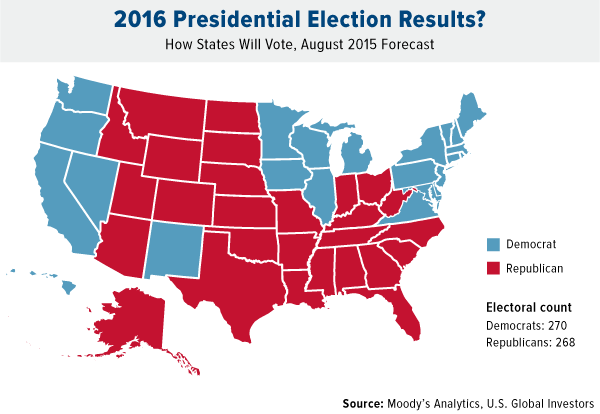As time passes, the presidential race has become more and more complex. The path to become the President is long, and in order to reach debates and primaries, a candidate must become aware of the influence of polling–as well as the American people.
The Influence of Polls
Polls are wielding greater influence over the presidential elections more than ever before. They allow candidates and the American people to understand the logistics of the presidential race and the popularity of each candidate in comparison to others as well as impact presidential campaigns.
An essential part of the campaign trail for candidates are debates. In May, Fox News sent out a press release that stated in order to participate in its first prime-time debate, candidates had to “place in the top 10 of an average of the five most recent national polls”. Candidates who were eligible to participate in the debate were able to convey their message on a televised event. However those who weren’t given the opportunity to debate were negatively affected. “I just don’t think polling is really up to the task of deciding the field for the headliner debate,” said Scott Keeter, a public opinion expert, in an article on the New Yorker.
Information that polls provide may affect voters’ perceptions of various candidates. Voters evaluate candidates more positively if their chances of winning are high and view candidates more negatively if their chances are low. This bandwagon effect has been proven in experimental studies published in New Evidence About the Existence of a Bandwagon Effect in the Opinion Formation Process; a study in 1993 by political scientists: Nadeau, Cloutier, and Guay states that individuals rally to the majority opinion which shows just how influential polling can be to the American public.
Reliability of Polls
Polls are extremely influential in the presidential race, but should they be? How can the American public be sure that polls are accurate?
It would be very time consuming and expensive to ask every eligible voter their opinion on presidential candidates and a range of other issues, which is why polls rely on a sample of the population–usually about 1,000 to 1,500 people. The key to accurate public opinion polling is the technique of random sampling, meaning everyone should have an equal chance of being selected as part of the sample. If a sampling is truly random and accurate, it should reflect the opinion of the general population.
A sample can only match the population with a certain degree of preciseness, which is known as a sampling error.The sample error is smaller when the sample taken is larger and more representative. In one of the most infamous surveys ever conducted, a 1936 Literary Digest poll underestimated the vote for President Franklin Roosevelt by 19 percent, incorrectly predicting a victory for Republican Alf Landon.
The magazine received an astonishing 2,376,000 responses for its poll, but its methods were flawed. In order to receive as many responses as they could, Literary Digest called names from large lists, like motor vehicle records and the telephone book. The people on the lists at the time, the Great Depression, were above the average income level and were more likely to vote Republican rather than Democrat. The magazine discovered that the most important thing in public opinion polls is accurate representation, not the number of responses.
History and Advancements
With the difficulty of creating an accurate poll, political scientists and pollers are advancing the way polls are conducted. They try to create more accurate and advanced polling techniques than when it first began.
Public opinion polling was first developed by a man named George Gallup. His mother-in-law was a longshot candidate for secretary of state in Iowa and was never expected to win. Gallup predicted the result in what might have been the first scientific political survey ever conducted. Since then, there have been many advancements in public opinion polling.
More recently, public opinion polling has been conducted by phone through random-digit dialing. Instead of polling door-to-door nationwide, pollers have the ability to randomly place phone calls across the country. However, there are some disadvantages to this: People are less likely to participate over the phone rather than in person–and it is easier to hang up the phone rather than slam a door in someone’s face. Also, according to Government in America: People, Politics, and Policy, 7 percent of the population doesn’t have a phone, which skew the results.
Internet polls have not replaced telephone pollsters, but they have become a new platform that polling can be held. Since internet pollsters can’t call you, they must wait for users to come to them. Since not everyone uses the Internet, the people who do (and complete online surveys) are younger and more liberal. While those who answer telephone pollsters are older and more conservative.
Results of polls are still not perfect and have some degree of sampling error.
Not only does polling need to continue to become more advanced, but so do people. As more members of Gen Z (people born between 1995 and 2010) are able to vote, they need to be able to recognize the importance of polls and their reliability. It is their job as they join the voting force to be able to use polls to their advantage when voting in federal elections.

Leave a Reply